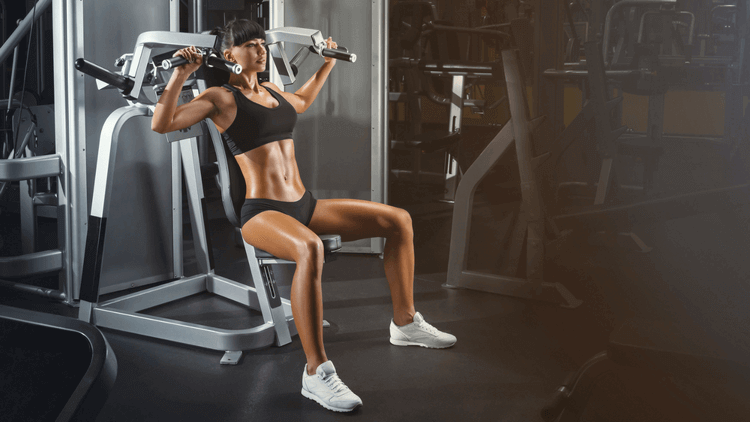Yoga is a brilliant way to exercise, socialize and calm your mind, but with so many classes and styles out there it can get a bit confusing knowing where to start. This article will walk you through what yoga is and the benefits you can get out of it, as well as the different types of classes and how to pick the right one for you.
First things first: What is yoga?
Now, this is quite a tricky question to answer, because the “yoga” that we know in the Western world bears very little resemblance to yoga as practised in India. In India, yoga is part of an ancient spiritual and mental tradition dating back at least as far as the 6th century BCE. The goals of yoga are tied to “moksha” (meaning liberation), although what this means, precisely, varies depending on the theological basis from which that sect of yoga is drawn.
Yoga in the Western world is primarily a system of physical exercise, sometimes with elements of mindfulness included. Its popularity has boomed over the last three decades, and in the US alone the number of yogis (yoga practitioners) has increased to over 20 million.
A typical Western yoga class will include a variety of different “poses” or positions, held for varying amounts of time and usually accompanied by certain breathing patterns.
Benefits
- Improved flexibility. All that stretching and breathing will definitely help to loosen up those tight muscles.
- Improved posture. Linked to improved flexibility, releasing tight muscles can often lead to improved posture.
- Reduction in anxiety, depression, chronic pain, and fatigue. Various studies have shown yoga to be effective at helping to improve mental health and wellbeing.
- Reduction in lower back pain. Plenty of studies have found good evidence that yoga can help to reduce, and even eliminate, lower back pain.
Types of yoga
There are more than a dozen different types of yoga practised in the Western world. To help give you some clarity, here is a bit of information about the six most common types you’re likely to find.
1. Ashtanga
One of the faster and more strenuous forms of yoga, Ashtanga typically includes six sequences of poses, with participants moving fairly quickly between each pose in the sequence. Yogis switch poses as they exhale and inhale, and each sequence of linked poses is known as a “vinyasa.”
2. Bikram
This relatively modern form of yoga, invented by Bikram Choudhury, has become something of a trend. It is basically a simple series of 26 poses performed in a room heated to about 40 degrees Celsius. Expect to be sweating buckets by the time you’re done.
3. Hatha
You’ll often see classes described as “Hatha” yoga, but this is a bit of a misinterpretation. Hatha is a term used to mean the physical practice of yoga, so, in essence, every form of yoga is Hatha yoga. What most classes mean when they say Hatha yoga is generally a basic, standard yoga with no extra bells and whistles.
4. Iyengar
Iyengar yoga is named after B. K. S. Iyengar, its founder. The focus of this type of yoga is on perfect alignment and very precise sequences. To achieve this, items such as straps, harnesses, boards, and blocks will often be used to help participants into the correct position.
5. Vinyasa/power
Vinyasa or “power” yoga is a fast-paced aerobic-inspired type of yoga created by Beryl Birch and Bryan Kest of the United States. The basis of this style is Ashtanga yoga, so expect plenty of fast transitions between postures. The main difference is that power yoga tends to be a bit more free with its order of poses, which can keep you guessing from class to class; great if you love a challenge, but probably not ideal for beginners.
6. Yin
Often described as “slow” or “breathing” yoga, Yin is all about stretching muscles for longer amounts of time. Lots of the poses are stretch-based, and many are passive stretches in which you aim to relax and let gravity provide you with the stretch.
Which style is right for me?
Reading this list, you’ve probably already got an idea of which style you’d like to try first. My personal recommendation is to start with a basic class such as Hatha yoga; this will allow you to learn some of the basics at a reasonable pace. From there, if you find that you’re super-inflexible, you could try Yin yoga, or if you want more of a challenge, you could progress to Ashtanga or power yoga. Alternatively, if you’re having real trouble with the positions or postures, try to find an Iyengar class which will help you to focus on achieving them.
The trick is to be honest with yourself about your level of ability and choose a class that feels right for you.
How to avoid injuries
Although you might not have thought so, yoga actually has quite high injury rates. The main reason for this is that people tend to get competitive in a class environment and push their bodies beyond what they are capable of.
Make sure to give your body time to become stronger and more flexible. Don’t try to rush to get better or compete with others; remember that you’re doing this for you and not for anybody else. Take your time and improve at your own pace.
Conclusion
That wraps up today’s lesson. If you’ve read all the way through, then you should now know what yoga is, its benefits, the different styles of yoga, how to pick the right style for you, and how to avoid injuries.
Good luck finding a class – and remember to enjoy yourself!






